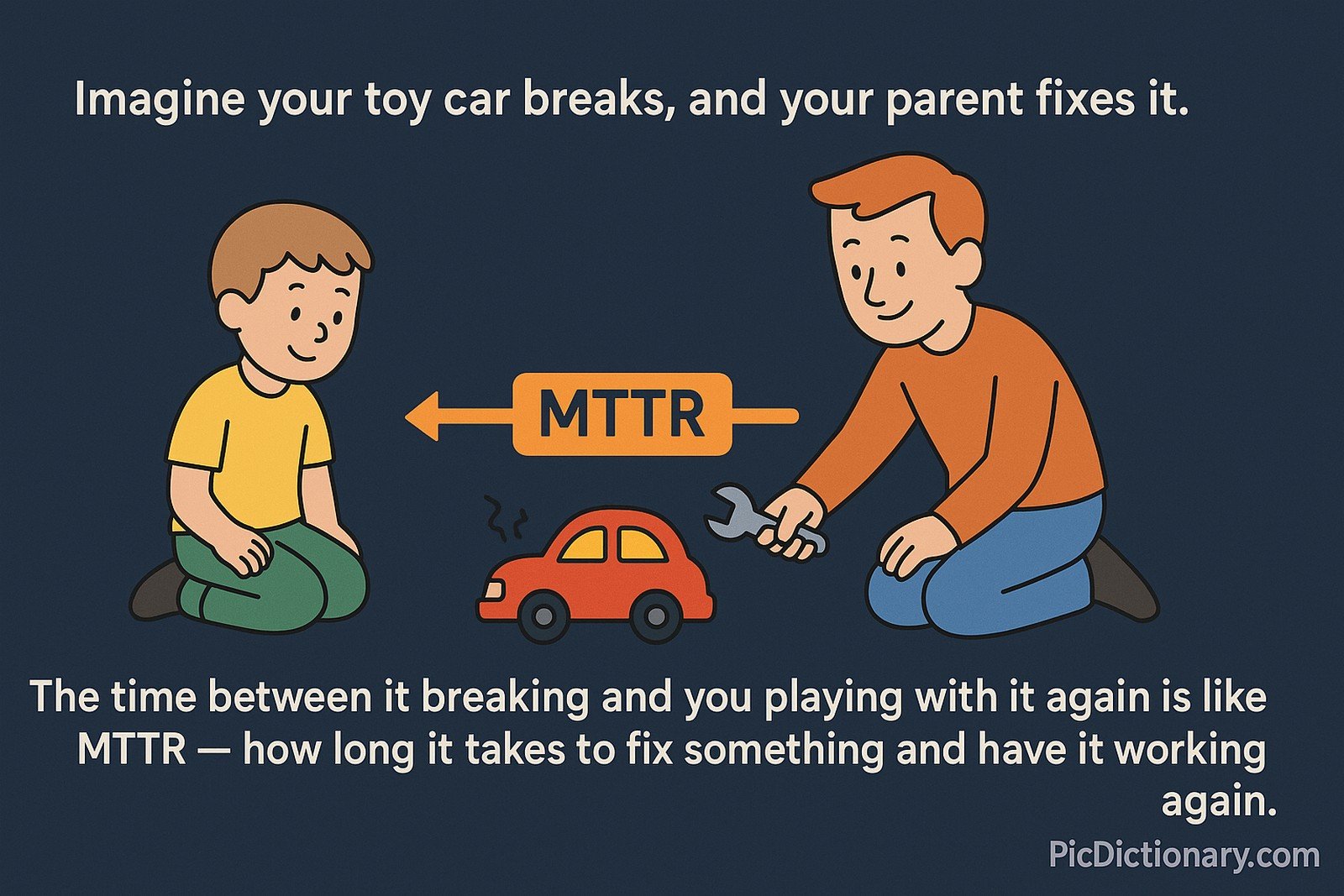Mean Time to Repair (MTTR)

Quick Navigation:
- Mean Time to Repair (MTTR) Definition
- Mean Time to Repair (MTTR) Explained Easy
- Mean Time to Repair (MTTR) Origin
- Mean Time to Repair (MTTR) Etymology
- Mean Time to Repair (MTTR) Usage Trends
- Mean Time to Repair (MTTR) Usage
- Mean Time to Repair (MTTR) Examples in Context
- Mean Time to Repair (MTTR) FAQ
- Mean Time to Repair (MTTR) Related Words
Mean Time to Repair (MTTR) Definition
Mean Time to Repair (MTTR) is a key performance metric used in reliability engineering and maintenance management. It represents the average time required to diagnose, repair, and restore a failed system or component to operational status. MTTR includes detection time, diagnostics, repair, and testing. A lower MTTR indicates efficient repair processes and higher system availability, making it critical in IT operations, manufacturing, and service industries.
Mean Time to Repair (MTTR) Explained Easy
Imagine your toy car breaks, and your parent fixes it. The time between it breaking and you playing with it again is like MTTR — how long it takes to fix something and have it working again.
Mean Time to Repair (MTTR) Origin
The concept of MTTR originated from reliability engineering and military logistics, where maintaining operational readiness was crucial. Over time, it was adopted in industrial maintenance and IT systems to measure system resilience and efficiency.
Mean Time to Repair (MTTR) Etymology
The term "repair" in MTTR reflects restoring something to its working condition, emphasizing the process and time involved in fixing issues.
Mean Time to Repair (MTTR) Usage Trends
With the rise of complex IT systems and manufacturing automation, MTTR has become a central metric for tracking downtime efficiency. Cloud providers, factories, and data centers increasingly focus on reducing MTTR to enhance reliability and customer satisfaction.
Mean Time to Repair (MTTR) Usage
- Formal/Technical Tagging:
- Reliability Engineering
- Maintenance Metrics
- System Downtime - Typical Collocations:
- "reduce MTTR"
- "track MTTR performance"
- "MTTR benchmark"
- "MTTR calculation"
Mean Time to Repair (MTTR) Examples in Context
- Data centers strive to lower their MTTR to ensure minimal downtime.
- Manufacturing plants use MTTR to assess maintenance team efficiency.
- IT services monitor MTTR after system failures to maintain service-level agreements.
Mean Time to Repair (MTTR) FAQ
- What is Mean Time to Repair (MTTR)?
It’s the average time it takes to fix and restore a failed system or component. - How is MTTR calculated?
It is the total downtime divided by the number of failures. - Why is MTTR important?
It helps measure system reliability and maintenance effectiveness. - Does a low MTTR mean better performance?
Yes, a lower MTTR reflects faster recovery from failures. - What industries use MTTR?
Industries like manufacturing, IT, telecommunications, and transportation. - Can MTTR be zero?
In theory, no; but automation can drastically reduce it. - Is MTTR the same as downtime?
MTTR measures the average downtime period per incident, not cumulative downtime. - How does MTTR differ from MTBF?
MTTR measures repair time; MTBF (Mean Time Between Failures) measures time between failures. - How can MTTR be improved?
By streamlining diagnostics, having spare parts ready, and training maintenance teams. - Is MTTR relevant in software systems?
Absolutely, especially for system recovery times and incident response efficiency.

Mean Time to Repair (MTTR) Related Words
- Categories/Topics:
- Reliability Engineering
- Maintenance
- IT Operations
Did you know?
Amazon once reported that reducing MTTR by just a few minutes can save millions annually in lost sales due to downtime. Every second of uptime matters in e-commerce giants.
PicDictionary.com is an online dictionary in pictures. If you have questions or suggestions, please reach out to us on WhatsApp or Twitter.Authors | Arjun Vishnu | @ArjunAndVishnu

I am Vishnu. I like AI, Linux, Single Board Computers, and Cloud Computing. I create the web & video content, and I also write for popular websites.
My younger brother, Arjun handles image & video editing. Together, we run a YouTube Channel that's focused on reviewing gadgets and explaining technology.



Comments powered by CComment